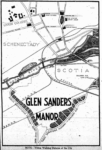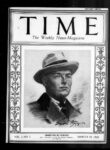-
Something you Ought to Read
•
As this ad from The New Albany in 1891 proclaims, there is no better city on this continent to live in, all things considered, than Albany, and if you intend to make it your permanent home, here is Something you Ought to Read. What follows is a glowing recommendation of the benefits of buying…
-
Cluett, Coon & Co.
•
From Scribner’s magazine in 1890, we have this stylish ad for Cluett’s collars and cuffs for gentlemen. Your choice of the Penokee or Natillo collar, not to mention full dress Monarch shirts in flannel, cheviot, and madras. I sometimes wish shirts still had detachable collars; it’s the first thing to go on a white…
-
Seneca Ray Stoddard
•
Nims and Knight were successors to Merriam, Moore & Co., who published a variety of things including the famous Franklin Globes from the historic (now, not then) Cannon Building in Troy. Among the offerings of Nims and Knight, as advertised in Scribner’s magazine in 1890, were a variety of books depicting the beauties of…
-
A Day in Albany
•
From the “Albany Tourist’s Handy Guide,” by John D. Whish, 1900: A Day in AlbanyFor the leisurely traveler, a day or more in Albany offers many pleasures. If a general sight-seer, he can walk about a bit — probably to the best advantage on Broadway, State and Pearl streets — which will give an…
-
The Gurney — they love it in Pine Hills!
•
If you live in one of the fine Pine Hills homes built by the Albany Land Improvement and Building Co. somewhere around 1890, when streetcar travel started to make the western reaches of Albany attractive to the middle class, I’d guess there’s a good chance your original boiler and radiator was a Gurney. William…
-
Pine Hills
•
In 1892, Albany was spreading out, and the Albany Land Improvement and Building Company was enticing Albany’s middle class to live out of the noise and dirt of the city. This ad begins with an auctioneer’s speech: “$840 I’m Offered!. . . and Sold for Eight Hundred and Forty Dollars.”If you are an Albanian…
-
No Elm Tree, but a marker at least
•
Today, Albany’s once famous Elm Tree Corner, where Philip Livingston’s elm grew for 142 years, is graced with a bland brick facade. A tablet originally placed on the bank building on the site has survived, recognizing Philip Livingston but not his tree. Long after this was originally posted, we wrote much, much more about…
-
John Tweddle
•
For someone whose name was once synonymous with Albany’s crossroads, having built Tweddle Hall there, it’s surprising that we no longer remember John Tweddle. And yet, he is responsible for one of the most recognizable features of the downtown skyline. George Rogers Howell, in his “Bi-Centennial History of Albany,” gushed: “There are monuments more…
Recent Posts
- Glen Sanders Manor (Not Mansion!)
- Polo Player Nabbed As Game Violator
- Amsterdam Heiress: Prisoner of the Nazis



